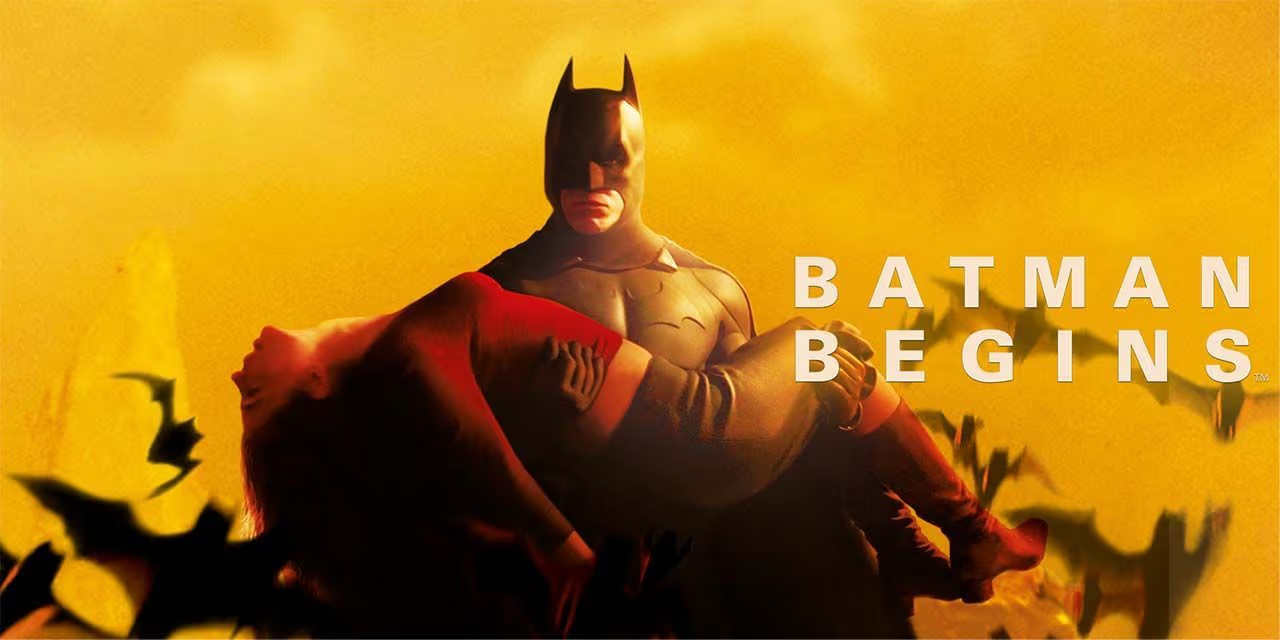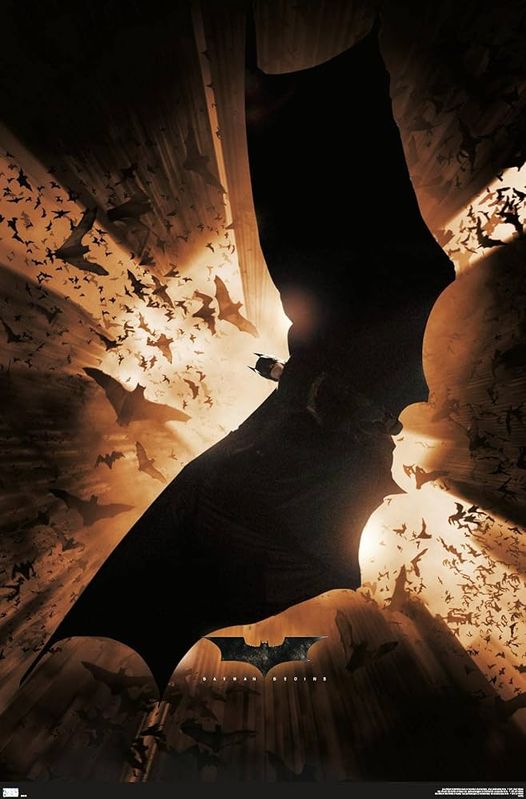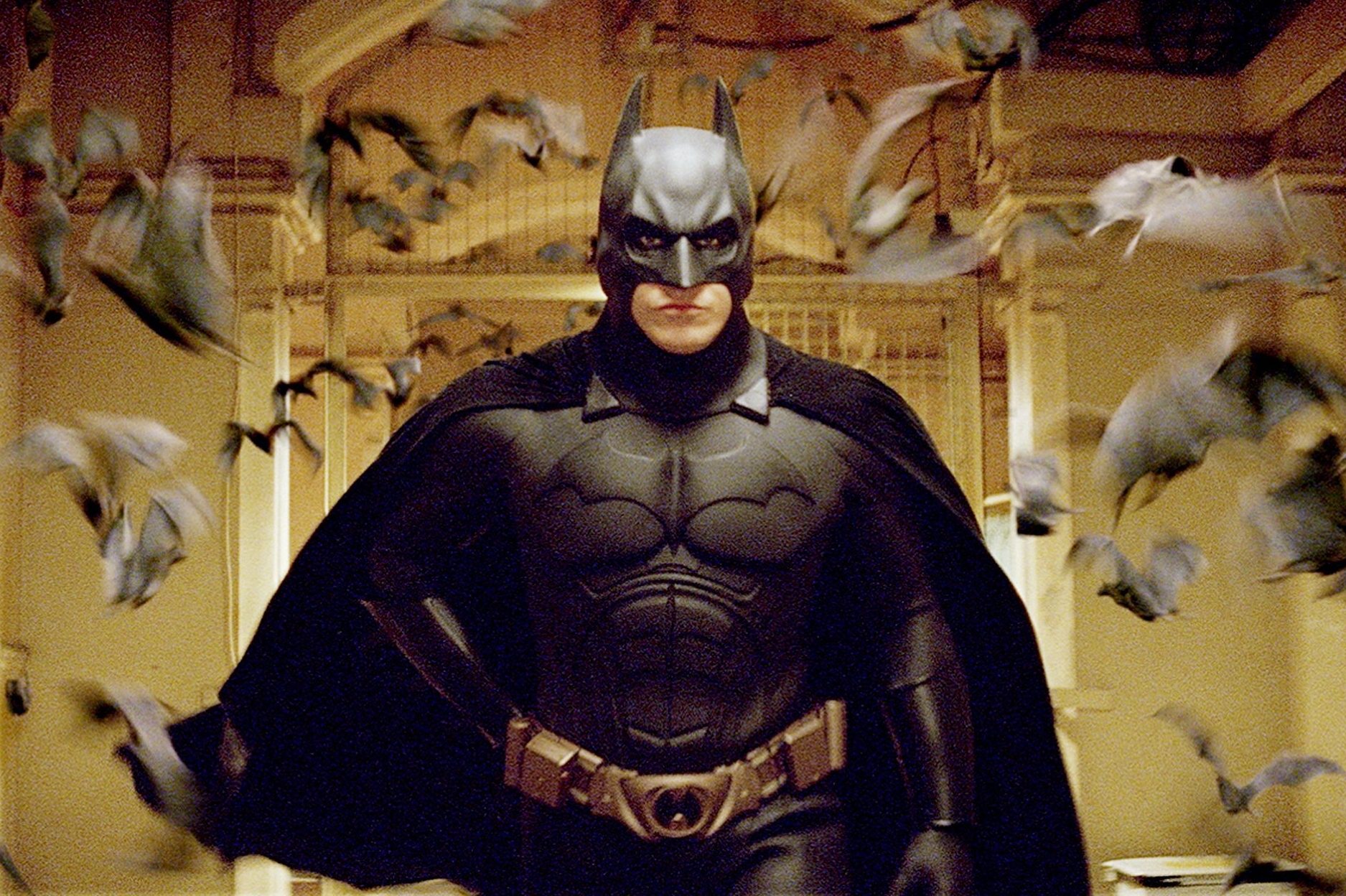Batman Begins (2005)

In the summer of 2005, the cinematic landscape was forever changed with the release of “Batman Begins,” directed by Christopher Nolan and starring Christian Bale in the titular role. This film marked a significant reboot for the Batman franchise, offering a fresh and gritty interpretation of the Dark Knight’s origin story.
“Batman Begins” delves deep into the origins of Bruce Wayne (Christian Bale), exploring the traumatic events that shape his journey to becoming Gotham City’s masked vigilante, Batman. The film opens with a young Bruce witnessing the murder of his parents, which instills in him a profound fear of bats and a relentless desire for justice. Christian Bale’s portrayal captures the complex psychology of Bruce Wayne, showcasing his transformation from a disillusioned billionaire playboy into the formidable protector of Gotham.
Central to Bruce Wayne’s transformation is his mentorship under Henri Ducard, played by Liam Neeson, and his training in the ways of the League of Shadows, a secretive organization led by Ra’s al Ghul (Ken Watanabe). Liam Neeson brings gravitas to the role of Ducard, presenting a mentor figure who challenges Bruce’s beliefs about justice and pushes him to confront his deepest fears.

Supporting characters such as Alfred Pennyworth (Michael Caine), Bruce’s loyal butler and confidant, and Jim Gordon (Gary Oldman), an honest cop in a corrupt city, play pivotal roles in Bruce’s journey. Michael Caine’s Alfred provides emotional grounding and moral support for Bruce, while Gary Oldman’s Jim Gordon represents a beacon of integrity in Gotham’s police force.
Katie Holmes portrays Rachel Dawes, Bruce’s childhood friend and assistant district attorney, who serves as a moral compass and love interest. Her character embodies the conflict between Bruce’s personal vendetta against crime and his commitment to justice through the legal system.

Thematically, “Batman Begins” explores the concepts of fear, identity, and the nature of heroism. Bruce Wayne’s fear of bats, initially a symbol of trauma, becomes the source of his strength and inspiration as Batman. The film delves into the psychological and emotional motivations behind Bruce’s transformation, presenting him not just as a masked vigilante, but as a symbol of hope and redemption for Gotham’s citizens.
Visually, “Batman Begins” is characterized by its dark, atmospheric cinematography and practical effects, which ground the story in a gritty realism. Christopher Nolan’s direction emphasizes practicality over CGI spectacle, bringing a sense of authenticity to Batman’s world and action sequences.
Critically acclaimed for its depth of storytelling, character development, and thematic richness, “Batman Begins” revitalized the Batman franchise and set a new standard for superhero films. It received praise for its intelligent narrative, complex characters, and exploration of moral ambiguity within the superhero genre.

“Batman Begins” was not only a critical success but also a commercial one, grossing over $370 million worldwide. Its success paved the way for two sequels, “The Dark Knight” (2008) and “The Dark Knight Rises” (2012), completing Christopher Nolan’s celebrated Batman trilogy.
In conclusion, “Batman Begins” stands as a landmark in superhero cinema, redefining the genre with its psychological depth, compelling characters, and nuanced storytelling. Christian Bale’s portrayal of Bruce Wayne/Batman, supported by a talented ensemble cast, brings a new dimension to the Dark Knight’s iconic legacy. As a gritty origin story that explores the roots of Batman’s crusade against crime, “Batman Begins” continues to resonate with audiences and remains a testament to the enduring appeal of the Caped Crusader.